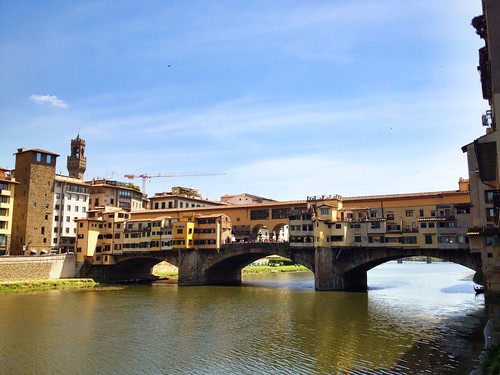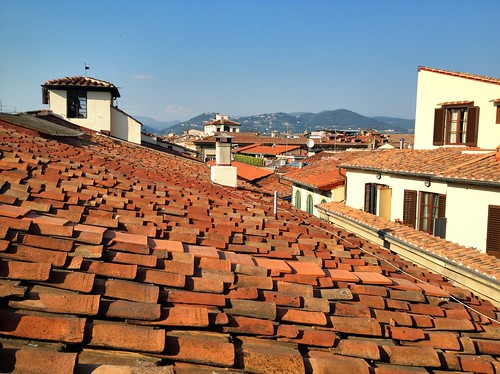When I arrived at Dubai International Airport, I was struck by how cosmopolitan and busy it was, despite the very early morning hour. The women in the airport were covered from head to toe in flowing black robes, and I could see the dark eyes of only a few. Among some of the younger women I encountered, however, I noticed hints of “Western wear” under their traditional dress, including jeans and designer handbags.
Once I left the airport, I was struck by the humidity and proliferation of expensive cars outside – Mercedes, BMWs, and SUVs with tinted windows. Many of the drivers were talking on cellular phones, anxiously honking at other drivers, and attempting to pick up newly arriving passengers.
At that moment, it finally became real to me that I was thousands of miles away from the small Georgia town where I grew up in the United States; a town where everyone knows everyone and where, at first glance, you might not believe there is much to do. How was it possible that I, a wheelchair user and Black woman, was able to travel to the United Arab Emirates (UAE) alone, with all of the obstacles that seemingly confronted me?
"Regardless of the level of accessibility abroad, we learn something about ourselves and others. Furthermore, others may learn from us. In fact, the more people with disabilities travel, the better accessibility will become."
In addition to growing up in a small community, I have a disability (Juvenile Rheumatoid Arthritis), so I never imagined that I would be able to travel to another state, not to mention another country. Furthermore, until I met Dan Hopkins, CEO of the Rocky Mountain Technical Assistance and Consulting Center, I had never met a person with a disability who had traveled internationally. Mr. Hopkins has a visual impairment, and it was he who “planted the seed” in me to travel abroad. With his encouragement when I was an Assistant Professor at Langston University, I applied for a fellowship from the Center for International Rehabilitation Research Information and Exchange (CIRRIE) to spend one month assessing the attitudes of people with disabilities in the UAE.
In addition to preparing for my first international travel experience, I had to prepare to travel to a country where attitudes regarding my disability, ethnicity, and nationality were a concern for me. I also knew that the infrastructure would not be as accessible as it is in the United States. Still, I knew that I could adapt. I played out every scenario in my head before I left. What if I can’t get off the plane? How will I get around? How will I be perceived? Will I be able to use the restroom? What impact will I have, if any, on the people of the UAE?
In the end, my many concerns proved unwarranted. Everyone was receptive and warm towards me. I did not experience any negativity from the people assisting me off of the plane, nor at any other time during my month-long stay in the UAE. I never experienced any fear, as strangers treated me like family from the moment we met. I reciprocated this respect, often in small ways. For example, I am not fond of tea or coffee, but drank it graciously each time it was offered to me. I quickly learned the need for an open and flexible mindset when traveling, especially internationally.
Each morning, before the busy day we had planned, I woke up to the beautiful sound of the call to morning prayer. I stayed in Al-Ain, a city in one of the seven emirates of the UAE. During my stay, however, my host, Dr. Nasser Al-Ameri, took me to other emirates, including Dubai and Abu Dhabi, as well as to a number of rehabilitation centers. We also visited sand dunes in the desert and the highest peak of Jabel Hafeet Mountain. I never thought that I would be atop a mountain, but there I was. Travel makes many experiences possible!
Access and People with Disabilities in the UAE
Despite the beautiful sites and a warm reception from local people, I did face architectural barriers in the UAE. In truth, I would have been unable to navigate on my own, a fact that was not lost on my host, Dr. Al-Ameri. In order to adapt, I relied on my host, and others, for assistance entering inaccessible buildings, including restaurants, and getting in and out of vehicles.
The barriers that I experienced in the UAE were architectural, all of which could be fixed given the tools and knowledge to do so. For example, some of the public restrooms I encountered in the UAE were big and modern, purposely designed for mothers who need changing space for their infants. Given similar forethought to people with disabilities, accessibility could have easily been added to the design as well. Since this wasn’t the case and there were no handrails in sight, I stood using the sink, or anything else that was available, for leverage. I also had use of a bathroom in my host’s home that was accessible, although not by design.
Prior to my arrival, my host constructed a ramp to his villa and offered to rent a car for the duration of my stay, knowing that it would be difficult for me to climb into his SUV. I declined, however, certain that we would find a way for me to use his vehicle, and we did. I am unable to bend my legs or walk up steps, so we placed bricks on the ground in front of my wheelchair as leverage. As I pulled up from my chair, I stood on the bricks themselves, instead of the ground, and thus was high enough to maneuver into the vehicle. It was a perfect example of a reasonable, practical and inexpensive accommodation! People with disabilities who travel to the Middle East, or any other region, should ensure that they have an excellent point of contact in the host country, in addition to creative ways to handle challenging situations.
During my stay, I also got to observe how people with disabilities from the UAE manage. At a governmental rehabilitation and employment center for people with disabilities, I learned a great deal about the services that are provided to young adults with disabilities in the UAE. The goal of the center is to increase opportunities for people with a variety of physical disabilities by providing not only employment training, but rehabilitation training, counseling and guidance, and recreational and cultural activities, as well. Some of the students were receiving employment training in graphic design, computer maintenance, and receptionist training, to name but a few occupations. One student boasted to me that she had recently received her driver's license!
Fortunately, I had an opportunity to attend the graduation ceremony of some of the students, which left a lasting impression on me. I was surrounded by graduates in traditional dress, and I blended in with them, as I, too, was dressed traditionally. The audience listened attentively as the President of the UAE, Shiekh Zayed Bin Sultan Al Nahyan, addressed the students directly via video. The graduation ceremony was indeed more “royal” than any I have ever attended. Moreover, the expressions on the faces of the graduates left me speechless. They were proud, as they should have been. Although I was only there for a few hours, I felt a certain kinship with those students, knowing that their accomplishments had not come easily.
The Lessons
Although the initial purpose of my trip was to assess the attitudes of people with disabilities in the UAE, I discovered that my visit had brought a new sense of awareness to my host, Dr. Al-Ameri, of architectural barriers to people with disabilities. He had observed my independence during a trip to the United States and realized how inaccessible the environment was when traveling with me in the UAE. As a result of my visit, he too learned something about access and the need to foster change. For local people to internalize that attitude is very powerful.
During my short tenure in the UAE, I learned more than I ever could from a textbook. I learned that this world truly is smaller than we think. It is easy to say that, but unbelievable to actually experience it.
Dr. Shonda McLaughlin has since moved on to become an experienced full-time counselor with the Washington, D.C., Regional Office of the Department of Veterans Affairs
Second, regardless of geography and disability, people with disabilities really can “go anywhere.” Yes, there may be some barriers, but that really is the fun part! Regardless of the level of accessibility abroad, we learn something about ourselves and others. Furthermore, others may learn from us. In fact, the more people with disabilities travel, the better accessibility will become.
My experiences in the UAE have impacted me professionally as well. In the classroom, I am now able to share my experiences with students and to encourage them to travel internationally. Furthermore, I have discovered that my positive experiences in the UAE have helped to dispel preconceived notions of the Middle East.
Most importantly, I learned that stepping outside of my comfort zone is very rewarding, even if I am from a small town in Georgia. Exposure is a great teacher.
As Salaam Alaikum.
For more information:
The Center for International Rehabilitation Research Information and Exchange (CIRRIE) conducts four types of international exchange programs involving researchers and technical assistance experts.
The National Clearinghouse on Disability and Exchange (NCDE) has an online database of international exchange programs for students and professionals, including programs located throughout the Muslim World and the United States.
A World Awaits You: Muslim World Issue features an extensive list of local, regional and international disability organizations, by country, and includes links to scholarship and financial aid resources for Americans and citizens of predominantly Muslim countries.
The Independent Living Institute offers to people with disabilities and their organizations online services and information, training materials, consultancy and technical assistance. The Study and Work Abroad for All project builds a database with information about international study and traineeship opportunities for young people with disabilities.
The Society for Accessible Travel & Hospitality (SATH) is an educational nonprofit organization whose mission is to raise awareness of the needs of all travelers with disabilities, remove physical and attitudinal barriers to free access and expand travel opportunities in the United States and abroad.
About the United Arab Emirates
With a history of over 5,000 years as an important post on ancient trade routes and thriving ultra-modern cities, infrastructure, shopping and entertainment, the United Arab Emirates (UAE) has an astonishing mix of past and present. This combination of the traditional and modern makes the United Arab Emirates a rich and fascinating travel destination in the Middle East.
Located within the Arab world, the United Arab Emirates borders Saudi Arabia, Oman, the Persian Gulf, the Straights of Hormuz and the Gulf of Oman.
Comprised of seven separate, but united Emirates or kingdoms (Abu Dhabi, Dubai, Sharjah, Ajamn, Ras Al-Khaimah, Umm Al-Quiwain and Al-Fujairah), the UAE gained its independence from British colonial authorities in 1971 and has since built itself into a modern success-story.
Like many countries in the Middle East, the United Arab Emirates is relatively accessible for people with disabilities – especially in the cities of Abu Dhabi and Dubai. Early in 2004, a draft law was submitted to grant and protect the rights of people with disabilities in the areas of employment, healthcare, education and access to facilities and services. Equal rights without discrimination is the underlying goal.
By Shonda McLaughlin
Source : here




















